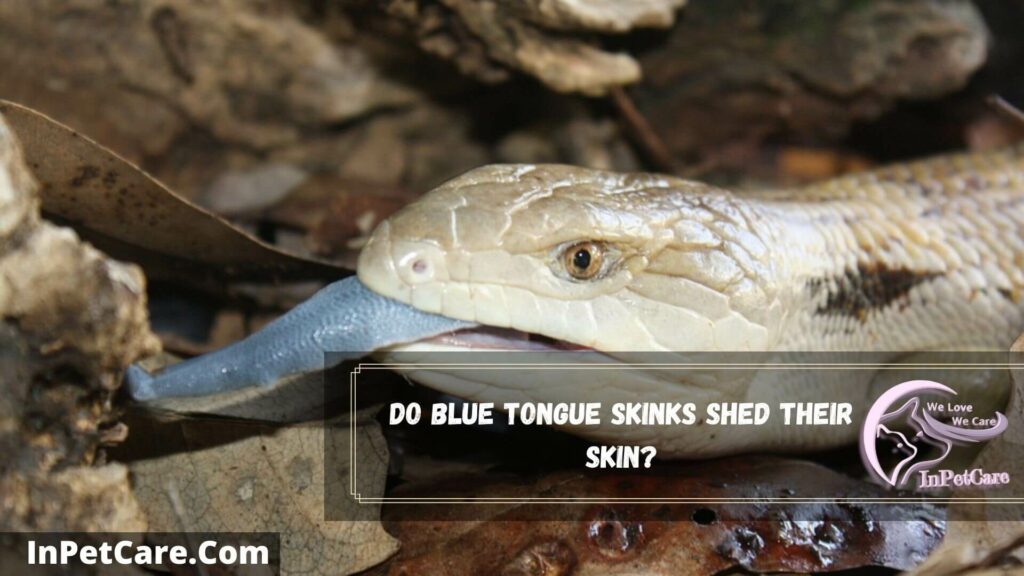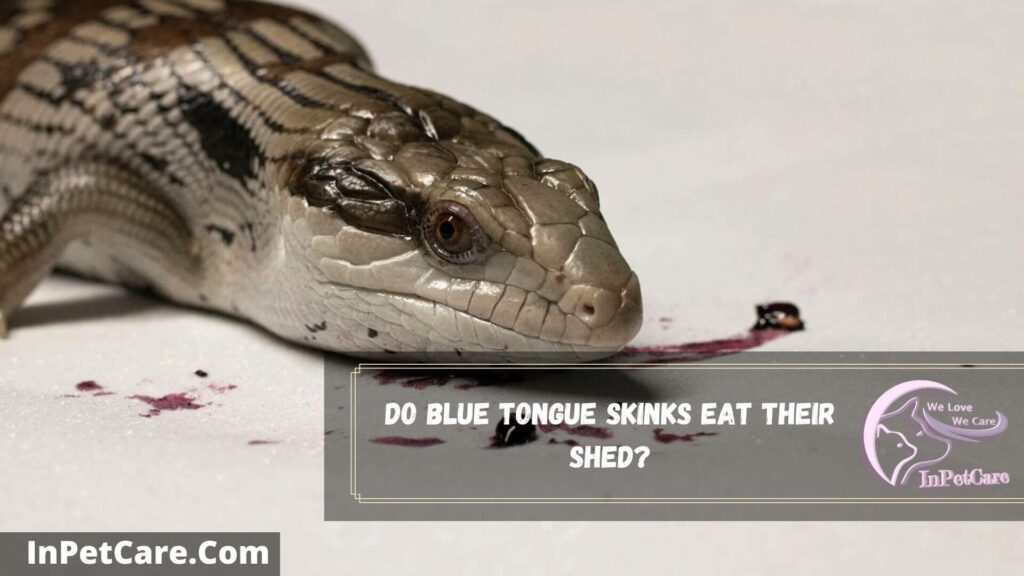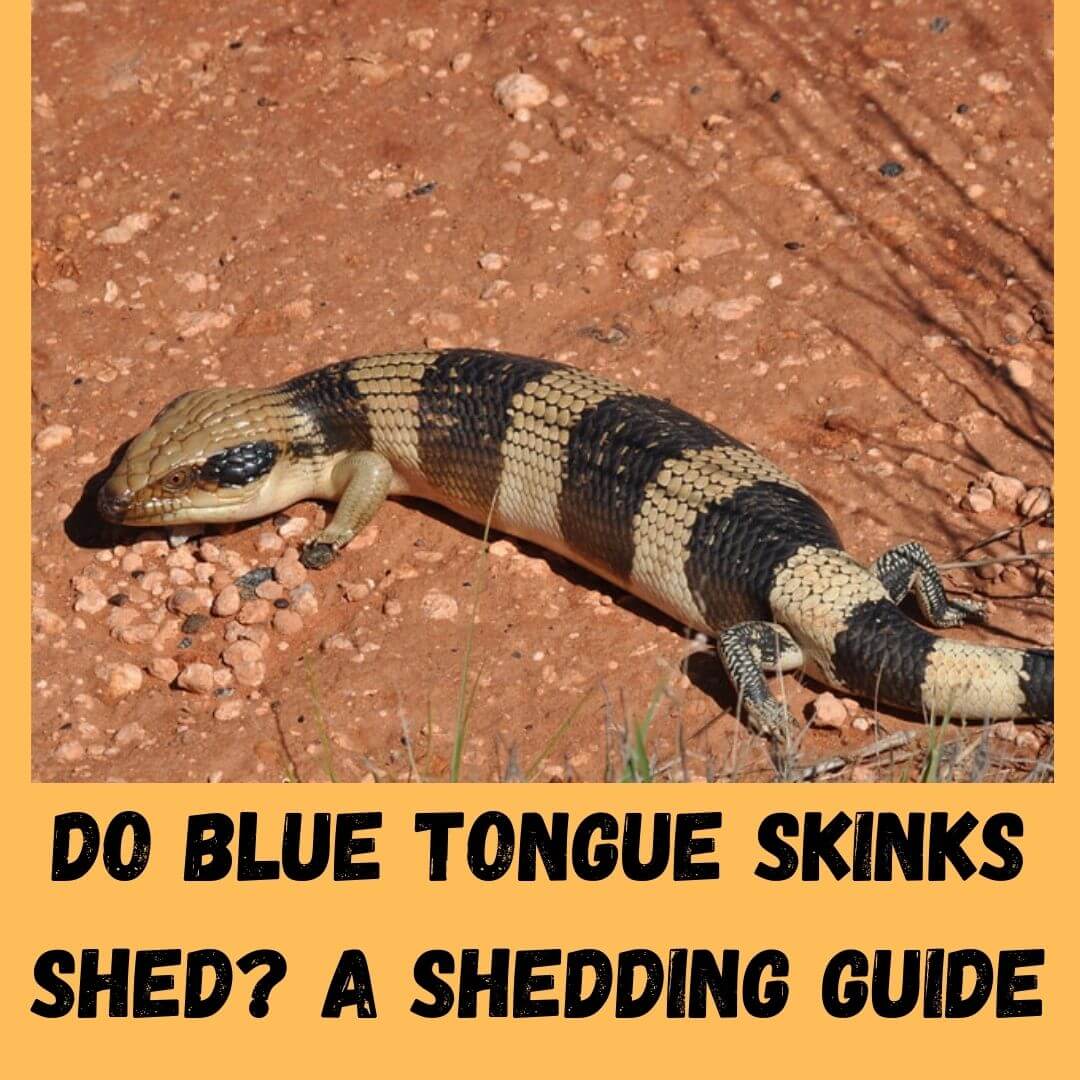I prepared this comprehensive article to help you understand your blue tongue skink shedding behavior. Shedding in blue tongue skinks is a normal process in which they tend to replace their old skin with new ones. Most owners become concerned when they see irregularity in their skink shedding. I will help you understand how often do blue tongue skinks shed and how you can help them during the shedding process. Let’s first know do blue tongue skinks shed.
Post Contents
- Do Blue Tongue Skinks Shed?
- Do Blue Tongue Skinks Shed Their Skin?
- How Often Do Blue Tongue Skinks Shed?
- Blue Tongue Skink Shedding Behavior
- Do Blue Tongue Skinks Eat Their Shed?
- Do Blue Tongue Skinks Shed In One Piece?
- How Often Do Baby Blue Tongue Skinks Shed?
- How Long Does It Take For A Blue Tongue Skink To Shed?
- Blue Tongue Skink Shedding Problem
- How To Remove Blue Tongue Skink Stuck Shed / Skin?
- How Do You Soak A Blue Tongue Skink?
- Blue Tongue Skink Trouble Shedding
- How To Help A Blue Tongue Skink Shed?
- Final Thoughts
Do Blue Tongue Skinks Shed?
Yes. From time to time, blue tongue skink will need to get rid of their old skin. It’s a very complex process by which skinks replicate a new epidermis under the new one. As soon as your skink gets ready with the new epidermis, they release enzymes to help separate the new skin from the old one. Just like any reptile, a blue tongue skink will also be shed once a month at least.
The shedding time and frequency vary accordingly from skink to skink. It depends upon their personality, habitat, changing environment, age, and humidity.
Do Blue Tongue Skinks Shed Their Skin?

Yes. Bluetongue skink sheds their skin in pieces rather than in one layer piece like snakes. It is common for reptiles and lizards like blue tongue skink to shed at least four times a year while others more than that. Many factors can affect your skink’s shedding process, which we will discuss later in this article. The factors that significantly impact your skink’s shedding process are its age and humidity level.
How Often Do Blue Tongue Skinks Shed?
Juvenil blue tongue skink aged between 3-12 months old shed once every 2-3 weeks. As soon as your skink gets 12 to 18 months older, their Shedding can occur once a month. For adult skinks, it is customary to shed at least 4 to 6 times a year. Even so, there are lots of factors that can affect the shedding process of your skink. Let’s learn about the shedding behavior of your blue tongue skink and the factors that may affect it.
Blue Tongue Skink Shedding Behavior
Let’s understand the shedding behavior of your blue tongue skink. We will first look at the shedding signs of your skin, and afterward, we will learn about the factors that affect their Shedding.
Signs Of Blue Tongue Skink Shedding
- Rubbing against walls of the enclosure, substrate, and various surfaces.
- Milky skin on their belly.
- Observing irritability in your skin before Shedding.
- Refusing food or water before or during Shedding. (Your skink might be feeling sick and uneasy, don’t be worried)
- Irregular pooping before shedding
- Digging more to get their skin off.
- Spotting clear film (white substance almost transparent covering their skin) on your skink’s skin. They might look pale.
- Dull skin
- Being lethargic
Factors That Affect Skink Shedding
Age
Age plays a significant role in your blue tongue skinks shedding behavior. When your blue tongue skink is young, their growth rate will be very high. They will need to shed more frequently to replace their old skin; otherwise, it might become tighter and harder to remove on their body. As your blue tongue skink grows older, their Shedding will get limited to 4-6 times a year.
Diet
Diet should be balanced for your skink to help produce a new epidermis. If you are not providing them with a proper diet containing 50% greens, 40% protein, and 10% fruit, they will not release the enzymes properly to separate their new skin from the old ones. Nutrient deficiency can lead a blue tongue skink to shed more or less. Infrequent Shedding is also a sign of a poor dietary routine.
Misting
Misting plays a massive role in making them shed faster. One may get confused or fool itself by thinking dry skin helps the skink shed faster. If they are getting moist enough on their body and in their enclosure, they will shed faster. I recommend misting your skink and its enclosure at least two times a day during the shedding process.
Bath
If you have been avoiding bathing your skink, you might be doing wrong. Washing it in warm water can speed up their shedding process aggressively. I generally prefer soaking skink in water for approximately 30-45 minutes. It helps to lose their unwanted skin.
So, from the next time, if you are experiencing your skink having difficulty during the shedding time, consider soaking your blue tongue skink in lukewarm water. We will discuss the proper shedding bathing formula later in this article, where we will also discuss other things that you can do to help your skink shed sooner and faster.
Humidity
To shed properly, your blue tongue skink’s tank needs to have an ideal humidity level already. Don’t be confused if I say each blue tongue species requires a different humidity level.
For example, Shingleback blue tongue skink needs the lowest humidity between 20 to 30%. On the other hand, Western and Centralian blue tongue skinks need a humidity level of around 30-40%, whereas Northern and Blotched Skinks require 35-40% humidity level, which is moderate. Below is the chart for each blue tongue skink species and its humidity levels needed for the proper shedding process.
| Blue Tongue Skinks’ Species | Humidity Need For Proper Shedding |
| Shingleback Blue Tongue Skink | 20-30% (lowest) |
| Centralian Blue Tongue Skink | 30-40% |
| Western Blue Tongue Skink | 30-40% |
| Blotched Blue Tongue Skink | 35-40% |
| Northern Blue Tongue Skink | 35-40% |
| Eastern Blue Tongue Skink | 40-50% |
| Indonesian Blue Tongue Skink | 40-50% |
| Merauka Blue Tongue Skink | 60-70% |
| Halmahera Blue Tongue Skink | 65-80% (highest) |
Do Blue Tongue Skinks Eat Their Shed?

Yes. Just like geckos and bearded dragons, blue tongue skink sometimes eat their shed. There is nothing to worry about; perhaps lizards and reptiles do it to destroy their evidence of being present there. This kind of habit is typical for lizards In The wild so that predators don’t find them. If you notice this behavior in your blue tongue skink for the first time, then maybe they are feeling threatened or uncomfortable. Check the tank if there is any insect or any being present disturbing them.
Do Blue Tongue Skinks Shed In One Piece?
No. Blue tongue skink shed In little pieces. Unlike snakes who cast off their whole skin at once, blue tongue skinks will shed in pieces, gradually in 2-3 days. Sometimes their shed can last 3-5 days. During the shedding process, you might be noticing their skin color changing.
How Often Do Baby Blue Tongue Skinks Shed?
3-12 months old baby blue tongue skink usually shed once in 2-3 weeks. 12-18 months blue tongue skinks tend to shed aggressively once a month. It is usual for baby blue tongue skink to shed more often in their initial body growth stage. Their body tends to grow faster at that time, which means they will need to release old skin sooner; otherwise, it can get stuck and harder to replace.
How Long Does It Take For A Blue Tongue Skink To Shed?
It varies from each individual skink-to-skink. Bluetongue skink usually completes their shedding process in 3-4 hours. However, sometimes, it can take up to 5 days. This could be due to the multiple factors affecting their Shedding, which we have discussed earlier. If you want to fasten the process of Shedding, you can bathe them and set the humidity level spikes right to support their shedding process for a few hours. Let’s discuss what you can do to help your skink shed fast and adequately.
Blue Tongue Skink Shedding Problem
If your blue tongue skink faces problems in their shedding process, it could be due to the wrong humidity level or a few layers of stuck skin around their toes. If you interfere with their shedding process, it can lead to trouble shedding. Let’s first discuss what you can do if you see any stuck skin. After that, we will discuss the blue tongue skink trouble shedding & its solution.
How To Remove Blue Tongue Skink Stuck Shed / Skin?
Bluetongue skink stuck skin can be a huge problem which is why you should always check them after they are done Shedding. If you don’t clear up the shed, it can pile up on top of each other causing issue for you skink’s future skin replacement/shedding process. If the old skin doesn’t get adequately removed on time, it can look bumpy, weird, and glued to their skin.
Below is the proper guide to soak them & get rid of stuck skin after the shedding process.
How Do You Soak A Blue Tongue Skink?
Here are the following steps to soak a blue tongue skink and remove stacked skin after their shedding process.
- Prepare lukewarm water for a bath.
- Add some shedding emollient aid to the bath.
- Now, soak your blue tongue skink in the water and remove the stuck skin using a cotton bud or an incredibly soft toothbrush.
- Remove skin around the ears using tweezers.
- To remove stuck shed skin around the head, you can use your fingers.
Note: You should avoid pulling their skin for the first few days after their Shedding because it can cause infection, and even skin peels off, resulting in bleeding.
Blue Tongue Skink Trouble Shedding
If you have noticed your skink shedding more than once in 6 weeks, it could be a bacterial infection, skin infection, or sickness. In this case, you should consult with your veterinarian and get them checked. Adult blue tongue skink over 24 months shouldn’t shed more than once in 6-8 weeks. Let’s learn how to help a blue tongue skink shed.
How To Help A Blue Tongue Skink Shed?
Here are the following tips to help a blue tongue skink shed adequately and faster.
- Get adequate humidity inside the enclosure to accelerate the shedding process.
- Install some accessories where your skink can rub or scratch its body to get rid of stuck skin. It helps in enhancing their shedding process.
- Get them a suitable habitat with the proper substrate, UVB lighting, moisture and temperatures.
- Mist your skink and its habitat at least 2-3 times in a day when they are shedding.
- If your beloved skink is facing challenging times during the shedding process, consider soaking it in warm water for approximately 30-45 minutes to help loosen the unwanted skin.
- It would help if you did not interfere when they are in their shedding period.
- If you ultimately failed to make your blue tongue skink shed, then it could be due to a severe health problem (nutrients deficiency, infections or illness). It would help if you visited th Vet with your skink ASAP.
Final Thoughts
Wrapping Up: it is normal for skinks to shed their skin 3-6 times a year. They sometimes eat their shed just like geckos and Bearded Dragons to remove any trace from predators. The shedding process can get stuck due to your interference as well. If your skink is shedding more frequently, like more than six times a year or more than once in 6 weeks, it could be due to infection or illness.
If you encounter your skink’s skin getting stuck after the shedding process, you should overcome the urge to pull it off. It is better to soak them properly and then try removing them. Most blue tongue skink owners often end up making mistakes and pulling off their skin, hurting their docile skink. A shedding bath formula for your skink mentioned above is the best method to follow to get rid of stuck shed/skin. I hope I managed to give you all the information needed on blue tongue skink shedding behavior.
If you find this post helpful, then consider sharing it with others as well. Shower your support by sharing this article. I have also shared a valuable resource on caring for blue tongue skink for you to check. See you in the following article, till then take care and goodbye.

94% of pet owners say their animal pal makes them smile more than once a day. In 2007, I realized that I was made for saving Animals. My father is a Vet, and I think every pet deserves one. I started this blog, “InPetCare”, in 2019 with my father to enlighten a wider audience.
